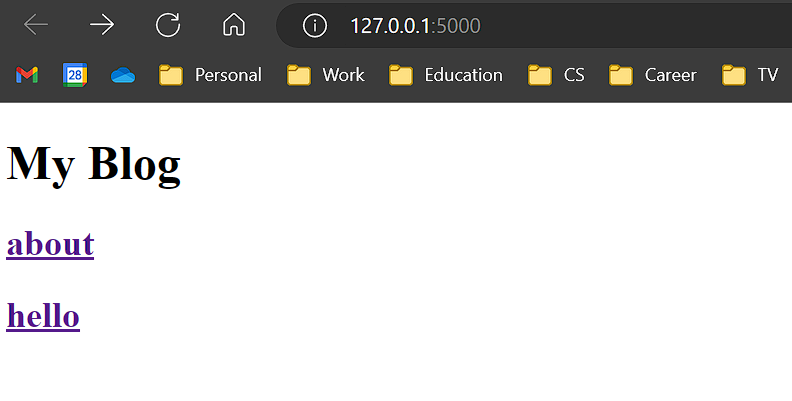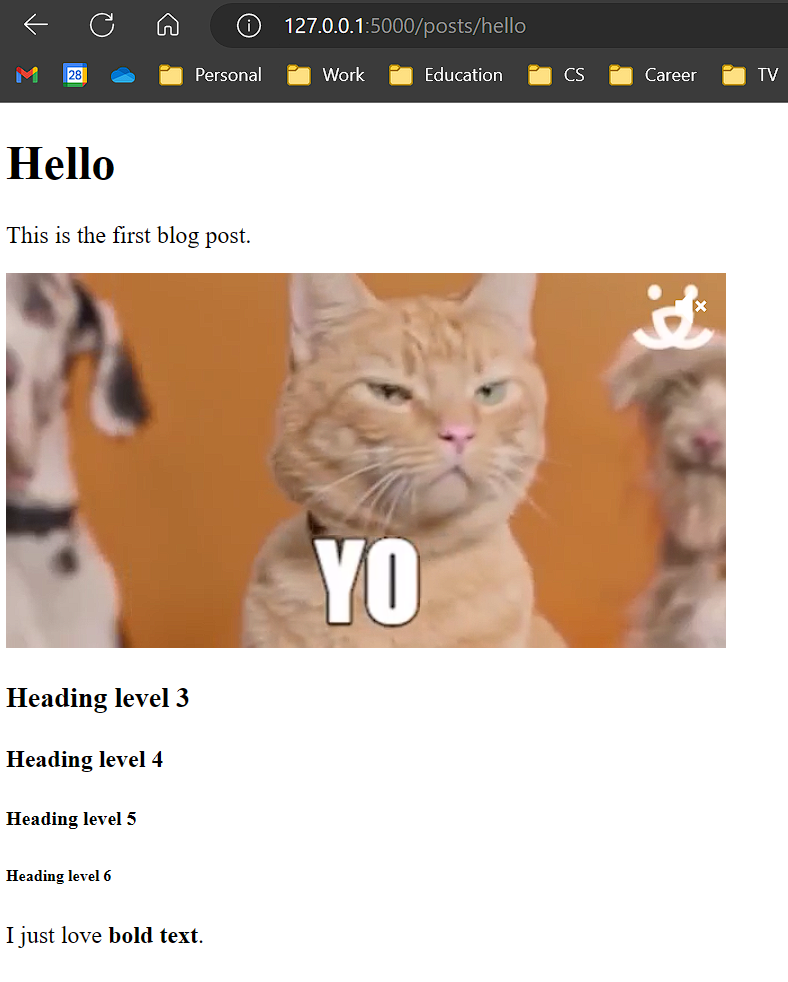Day 7 - Let's build an App in Python
Let's create a simple blog app with the help of Flask that supports posts in markdown.
Initiating virtual env and installing packages
Let's create a directory for our blog project. After you have created your project directory, create virtual environment using the following commands:
- Windows
- Linux//MacOs
Activate the virtual environment:
- Windows cmd
- Windows powershell
- Linux//MacOs
Now let's use pip to install required modules and packages that we will be using in this project.
Creating the flask app
First, create a new Flask app, by creating a file in root of the project directory called main.py:
Define a route for the home page:
Define a route to handle requests for individual blog posts:
@app.route('/posts/<path:path>')
def post(path):
with open(f'posts/{path}.md', 'r') as file:
content = file.read()
html = markdown.markdown(content)
return render_template('post.html', content=html)
Create templates for the home page and individual blog posts, we can do this by creating a new directory in root of project called templates. And then further create the two following html files:
index.html:
<!DOCTYPE html>
<html>
<head>
<title>My Blog</title>
</head>
<body>
<h1>My Blog</h1>
{% for post in posts %}
<h2><a href="/posts/{{ post }}">{{ post }}</a></h2>
{% endfor %}
</body>
</html>
post.html:
<!DOCTYPE html>
<html>
<head>
<title>{{ title }}</title>
</head>
<body>
<h1>{{ title }}</h1>
<div>{{ content|safe }}</div>
</body>
</html>
Modify the home route to display a list of blog post titles:
@app.route('/')
def home():
posts = []
for file in os.listdir('posts'):
if file.endswith('.md'):
title = file[:-3]
posts.append(title)
return render_template('index.html', posts=posts)
Adding markdown posts
Now before running the app, let's add few posts.
Create a directory called posts and add some Markdown files with blog post content.
Let's add a hello.md:
# Hello
This is my first blog post
### Heading level 3
#### Heading level 4
##### Heading level 5
###### Heading level 6
I just love **bold text**.
Now, let's run the app, type the following command:
And you should see the following output in the termainal:
python main.py * Serving Flask app 'main' * Debug mode: on WARNING: This is a development server. Do not use it in a production deployment. Use a production WSGI server instead.
* Running on http://127.0.0.1:5000
Press CTRL+C to quit
* Restarting with stat
* Debugger is active!
Here is how it would look, I have 2 blog posts and have some gifs in my blog posts. Navigate to 127.0.0.0:5000 in a browser window:

If we click on the hello blog post:
